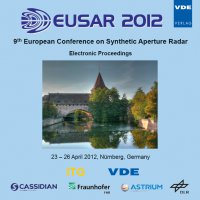Tweaking baseline constellations for airborne SAR tomography and InSAR: an experimental study at L- and P-bands
Konferenz: EUSAR 2012 - 9th European Conference on Synthetic Aperture Radar
23.04.2012 - 26.04.2012 in Nuremberg, Germany
Tagungsband: EUSAR 2012
Seiten: 4Sprache: EnglischTyp: PDF
Persönliche VDE-Mitglieder erhalten auf diesen Artikel 10% Rabatt
Autoren:
Frey, Othmar (Earth Observation & Remote Sensing, ETH Zurich, Switzerland / Gamma Remote Sensing, Gümligen, Switzerland)
Meier, Erich (Remote Sensing Laboratories, University of Zurich, Switzerland)
Hajnsek, Irena (Earth Observation & Remote Sensing, ETH Zurich, Switzerland / German Aerospace Center - DLR, Germany)
Inhalt:
A notable obstacle hindering widespread application of SAR tomography for 3D mapping of vegetation is the relatively large number of acquisitions that are needed to obtain a high resolution and a good rejection of spurious responses in the direction perpendicular to the line of sight. In this paper, we discuss the impact of different baseline constellations on 3-D mapping of vegetation volumes and the underlying topography in terms of tomographic focusing as well as classical single-baseline repeat-pass interferometry. The effects are studied using two airborne tomography data sets at L- and P-bands.


